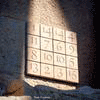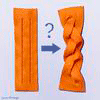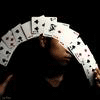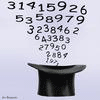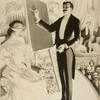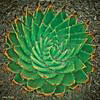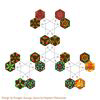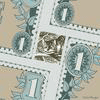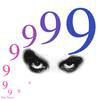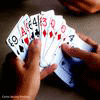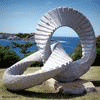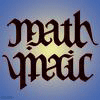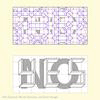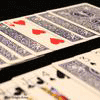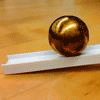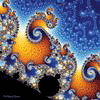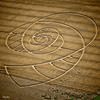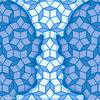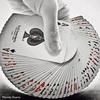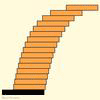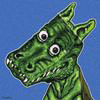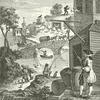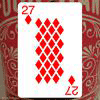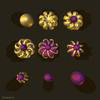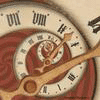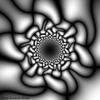Mathematics Awareness Month 2014: Mathematics, Magic, and Mystery
Navigate the Calendar
Seeing the Seemingly Impossible
In 1957 Stephen Smale proved something that many mathematicians thought was impossible. He showed that a sphere can be turned inside out by means of smooth motions and self-intersections. In 1994, the short film Outside In was produced at the Geometry Center under the direction of Silvio Levy, Delle Maxwell, and Tamara Munzner. The team developed Bill Thurston’s sphere eversion method into a film that makes it possible for us all to observe the seemingly impossible.
Taking it Further
The full version of Outside In is 22 minutes long and can be ordered from CRC Press. The accompanying 48 page, full-color book, Making Waves, introduces more precisely the mathematical ideas behind Outside In and develops them further.
Torus eversion is not as complex as sphere eversion, but it is still not simple. Can you imagine how to turn a torus inside out using smooth motions and self-intersections without puncturing, ripping, creasing, or pinching the surface? These rules for eversion may seem arbitrary but they make sense in the context of differential topology.
The video below provides a solution.
The Underlying Mathematics
Sphere eversion is part the branch of mathematics called topology. Visualization and diagrams are intrinsic to developing an intuitive understanding this field.
A more technical video on sphere eversion is The Optiverse made by John M. Sullivan, George K. Francis, and Stuart Levy.
Turning a surface inside out, by Anthony Phillips, (Scientific American, May 1966, p. 112–120) is both clearly written and accessible. It was the first published visual account of a recipe for turning the sphere inside out.
Chapter 6 of A Topological Picture Book, by George K. Francis (Springer, 1987), is a beautifully illustrated introduction to this topic.
Arnold Shapiro’s Eversion of the Sphere, by George K. Francis and Bernard Morin (Mathematical Intelligencer, 2, 1979, p. 200–203) requires some topology and a good spatial imagination, but is not very technical. Although Shapiro was probably the first person who had a detailed idea of how an explicit eversion might be realized, his method only became well-known many years after his death, and largely thanks to this article.
A Classification of Immersions of the Two-Sphere, by Steve Smale, (Transactions of the American Mathematical Society 90 (1958), p. 281–290) is the paper the fueled the subject of sphere eversions. It contains a general theorem (which unfortunately requires very technical language to state), one of the consequences of which is that the sphere can be turned inside out by means of smooth motions and self-intersections.



